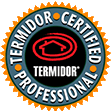Latin Name
Order Siphonaptera
Appearance
Fleas are small, wingless and about 2.5 mm long. Their bodies are shiny and reddish brown in color covered with microscopic hair and are compressed to allow for easy movement through animal fur. More information on what fleas look like.
Behavior, Diet & Habits
Adults are parasites that draw blood from a host. Larvae feed on organic debris, particularly the feces of adult fleas, which contain undigested blood. Fleas commonly prefer to feed on hairy animals such as dogs, cats, rabbits, squirrels, rats, mice and other domesticated or wild animals. Fleas do not have wings, although they are capable of jumping long distances.
Reproduction
Eggs are not attached to the host. Eggs will hatch on the ground, in rugs, carpet, bedding, upholstery or cracks in the floor. Most hatch within two days. Read more about the life cycle of fleas.
Fleas In The House
Fleas depend on a blood meal from a host to survive, so most fleas are introduced into the home via pets or other mammal hosts. On some occasions, fleas may become an inside problem when the host they previously fed on is no longer around. Then fleas focus their feeding activity on other hosts that reside inside the home. An example of such a situation is when a mouse inside the home is trapped and removed, the fleas that previously fed on the mouse are then forced to feed on pets or people.
Employing exclusion practices is important for many pest problems, but exclusion does not have a major, direct benefit for flea control. However, sealing cracks, gaps and holes to help keep rodents or other potential hosts from gaining access into the home is an important indirect way to keep fleas outside. The most effective ways to keep fleas from getting inside the home is to eliminate outdoor flea habitats and outdoor hosts, plus using area-wide flea control chemical products and veterinarian-approved flea control products on pets.
Dog Flea

Cat Flea

Human Flea








